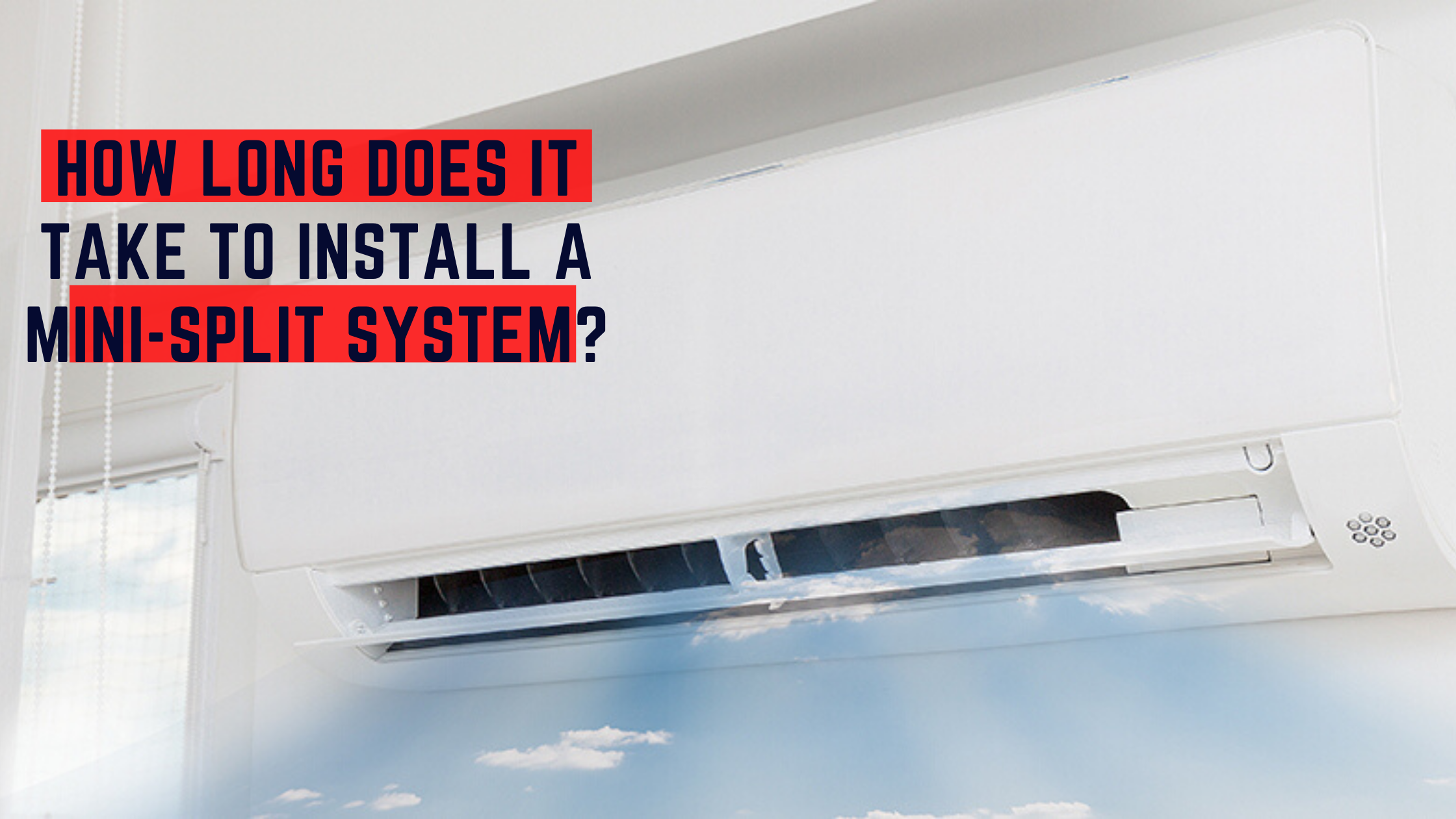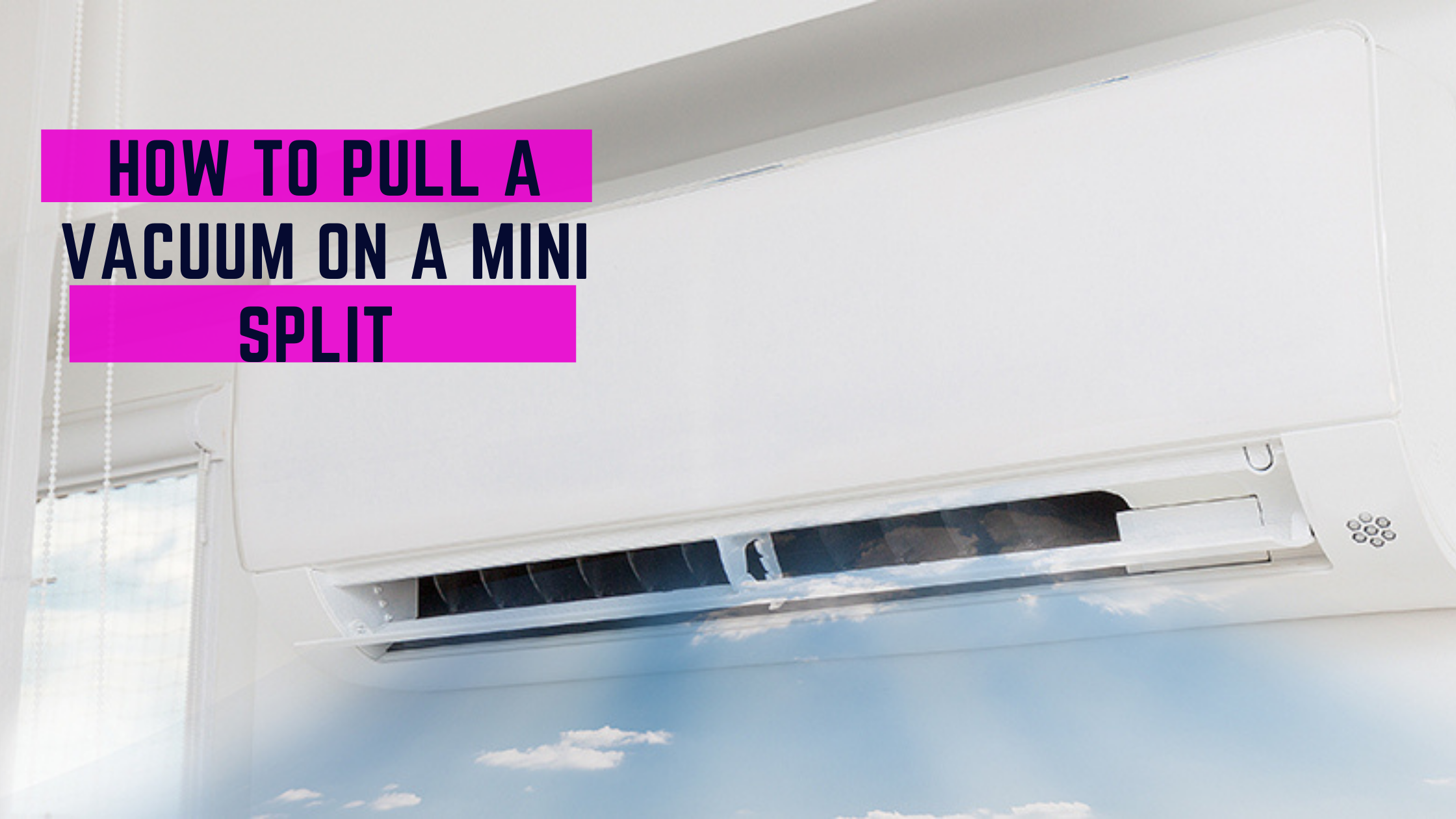Hi! In full disclosure, we may earn money from companies (like Amazon) mentioned in this post if you make a purchase through our links. Thanks in advance for the support!
Installing a mini split air conditioning system in your home comes with a lot of benefits in terms of energy consumption and ease of installation. Since it is a ductless system, it definitely takes a shorter time to install versus a traditional central air conditioning setup.
So, how long does it take to install a mini-split AC system? It only takes around one to two days to install a full mini-split system in most homes. Compared to having a full-on ductwork installed as needed for central air conditioners to work, ductless system installation is a whole lot easier and comes without complications when done by a competent professional.
CALL FOR QUOTE: 1.855.920.1857
Start With a In-Home Inspection
Before the actual unit installation, an in-home inspection should be done by someone who understands how a mini split system works. Mini split experts will be able to plan out your space and give proper advice on what type of unit is appropriate for your home’s cooling and heating needs.
To have a proper assessment of your air conditioning requirements, a professional will consider the following things:
- Square footage of your home
- Age of your house
- Type and amount of insulation needed
- Electrical source for your unit
These things will guide the installation process. Planning these out will not only ensure the safety and efficiency of your AC system, it also cuts down installation time.
Understanding The Mini-Split Installation Timeline
Once initial inspection has been done, a quotation or estimate will be provided for the fees of their services and the price of materials that will be used in the installation. Make sure to ask about warranties and maintenance requirements from your service provider as well.
Once everything is agreed upon, you can then proceed to scheduling the actual mini split installation.
CALL FOR QUOTE: 1.855.920.1857
Here’s the usual timeline of the installation process:
Step 1: Mounting the Indoor Units
Mini split system includes indoor and outdoor units. You can have up to eight indoor units connected to a single outdoor unit depending on the capacity of your system. The number of indoor units and the placement of these will be based on the plan created after the initial assessment.
Step 2: Making Way for the Tube Connections
To connect your indoor units to your condenser outside, the installer will have to make way for the tubes. These tubes are the passage ways where the air is transferred from the condenser units to your indoor evaporators.
Step 3: Electrical and Wiring Connections
Aside from the piping system, electrical connections will have to run to provide power to your mini split units. The wiring will have to be installed safely and efficiently. A competent installer will be able to plot out the proper layout of the wiring to make installation quick and free from complications in the future.
Step 4: Setting the placement of your mounted indoor units
Indoor units will have to be secured in place once the brackets are set. You don’t want your expensive units falling off your walls!
Step 5: Installing the outdoor condenser
The outdoor unit is your mini split’s mother ship. This, of course, needs as much TLC in the installation process.
Depending on the layout of your indoor units, the condenser can be installed ground-level or against upper-level walls. If installation is on the ground level, it can be placed safely to the ground. For upper-level placements, brackets similar to those used in indoor units will be used to mount the outside condenser against the exterior wall.
Step 6: System Connections
After all the units and both tubular and wiring connections are in place, a final inspection should be done to assess if additional insulation and sealants are required. There is also an option to conceal the piping work especially if they run indoors.
Once everything seems perfectly in place, you are done with the installation!
CALL FOR QUOTE: 1.855.920.1857
Where Should I Place My Mini Split Units?
The great thing about a ductless system is that you can customize the placement of your indoor units. You can place them on walls, ceilings and there are even options to place them on the floor. It really depends on your space requirements and your service provider can help you with this decision.
Although the most popular are wall-mounted mini splits, things like windows and room square footage should be considered when deciding on the placement of your indoor units. Small spaces are usually fitted with mini splits on the ceiling because it doesn’t take much of the space.
Aesthetics can also be a deciding factor of whether you want your units concealed or exposed. Some houses prefer a more discrete air conditioning unit.
Choosing which rooms you want to equip with indoor units is also something to think about.
Usually, the bedroom is a priority because the temperature of the room affects the quality of rest you get. Just make sure your AC unit isn’t placed where the cold air is directly blowing over your bed. This can cause a lot of sleeping discomforts to most people.
The living room is also one of the first places you want to have your air conditioning installed in. This is where residents spend most of their time in and it also makes the space more welcoming for visitors and guests.
Can I install my own mini split system?
If you are not an expert, please ask for the help of professionals. A skilled professional will make things easier, safer, and faster! Proper installation of your AC units should be a priority. This makes the system perform more efficiently and this will ensure your units will last for a long time.
Consulting a professional may seem like an additional cost you are hesitant to spend on. However, this will actually save you from unnecessary expenses that will occur if your system breaks because of wrong installation. Leaks can also happen to your piping connection, this will cause your system to work harder and you will end up with a bigger electricity bill.
Plus, the installation process doesn’t only involve the AC parts that need to be placed. Most of the time, it also requires structural and electrical expertise. Remember, you are dealing with the construction and electrical connections of your home. These are things that need to be carefully dealt with.
CALL FOR QUOTE: 1.855.920.1857
Related Questions
How long should I wait to turn on the air conditioner after it’s installed?
If it’s a new unit and everything is installed properly, you can turn it on after 30mins. But again, a professional should be consulted because this will depend on the system that was installed and the actual placement of your hardware.
I can’t have holes drilled to my walls
Experts do prefer running the piping and wiring outside so holes will have to be drilled to the walls where your indoor unit brackets are mounted on. In some cases, though, this is not feasible and the next best thing would be running them in the ceilings and edges of your walls.
When’s the best time to have a mini split installed?
For your air cooling needs, you will feel the urge to have it installed during summer. But actually, a lot of people have their units installed during this time. This may affect the costs and availability of the service providers so it’s better to plan ahead. Mini split systems can actually be installed all year round.
How much does it cost to install a mini split system?
On average, the whole installation process can be somewhere between $2,500 and $5,000. This includes the hardware and installation.
AC units can cost around $700-$2000 and installation is usually $500 minimum and $5,000 maximum.
This all depends on the time it takes for the whole installation process to be completed plus the materials and number of persons needed to work on the project.
Final Thoughts
When the thought of having a full on AC system arises, some people do get too excited especially when they think about all the benefits of having a good mini split system. Time and cost constrictions can affect the decision of going about the installation process.
We cannot stress the importance of having a professional installation, though. For the safety of your finances and your homes, please prioritize expert help.



